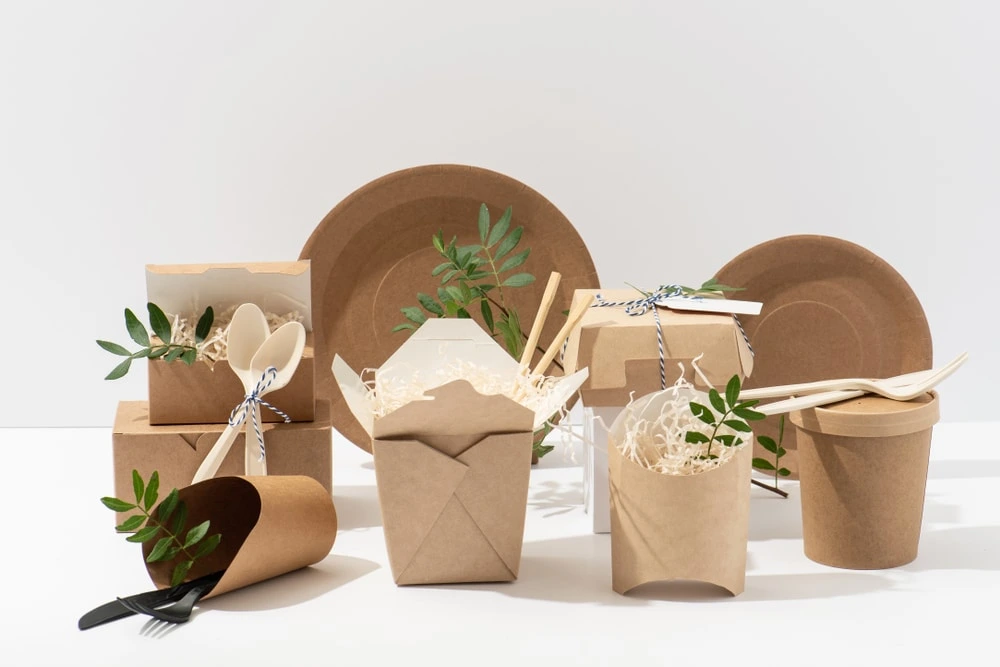5 Ways Packaging Design Can Help End the Plastic Waste Crisis
The global plastic waste crisis requires solutions at the business organization level. Companies must commit to minimizing packaging waste, given that packaged goods are among the biggest contributors to plastic pollution.
Taking this step is good not only for the environment but also for business. The plastic waste crisis can serve as a massive opportunity for companies that champion sustainability to meet the growing demand for more eco-friendly practices, starting with packaging design.
There are many ways to improve packaging to help reduce plastic pollution and help end the plastic waste crisis. But first, here are fast facts and statistics about plastic waste that may influence your decision to minimize plastic packaging.
Data on Plastic Waste
- Single-use packaging accounts for 40% of plastic production. (Source: National Geographic)
- Around 32% of plastic-based packaging is uncollected. (Source: Forbes)
- In 2018, plastic containers and packaging were approximately 14.5 million tons. (Source: EPA)
- There are nearly one million plastic beverage bottles sold every minute around the world. (Source: National Geographic)
- Plastic bottles, bags, and food containers contain chemical additives that are harmful to humans and wildlife due to their association with cancer, birth defects, and immune system suppression. (Source: Center for Biological Diversity)
5 Ways to Help End the Plastic Waste Crisis Through Packaging Design
- Utilizing biodegradable alternatives
Plastic bags can take hundreds of years to degrade, and even with that duration, they do not fully decompose. The result is that they continue to pollute the environment in the form of microplastics. Sustainable packaging that uses compostable materials can help alleviate this danger. An example is compostable coatings.
Designing packaging with this biodegradable material has beneficial uses on various consumer goods, such as food. This packaging solution mimics the purpose of plastic as a safeguard against pressure, humidity, bacteria, and other external factors that can trigger food spoilage. But unlike plastic, compostable coatings are fully biodegradable while also keeping food fresh.
Another component of biodegradable and compostable packaging is eco-friendly inks, such as water-based or soy-based inks. These biodegradable inks are ideal for recycling paper, so using them alongside other compostable products in packaging can make your product 100% renewable.
- Recycling and reusing packaging
A straightforward approach to reducing the plastic waste crisis is designing reusable packaging that consumers can use for extended periods. Packaging with reuse options includes refillable containers, glass bottles, and water jugs.
Besides economizing the use of raw materials, these types of packaging let your customers make repeat purchases at lower price points since they no longer have to pay for new packaging.
The use of recycled materials goes beyond the primary packaging, as you can also use recycled cardboard and paper inserts in secondary and tertiary packaging. - Choosing minimalist designs
Minimalist packaging creates less waste, consumes less energy to manufacture, and brings down overall production costs. To achieve a minimalist design in packaging, start with the size and weight of the material. Thinner and lighter walls in packaging make it more compact without excess padding that ends up as waste.
Besides using fewer components in packing materials, there should be less space or volume to facilitate easier and faster transportation of goods. This efficiency in packaging design can ultimately benefit the environment through reduced energy consumption and carbon footprint. - Exploring plant-based materials
Plastics comprising plant-based materials are excellent alternatives to poly plastics. Packaging with these materials is also called bio-based plastics and typically comes from corn, coconut, wheat, mushroom filaments, sugarcane, potato cuttings, banana peels, and mango skins.
Since these plastics come from natural materials and agricultural by-products and consume less petroleum to produce, the amount of greenhouse gases they generate is minimal.
When used in shampoo bottles and films for frozen food products, plant-based packaging can be recycled. The composting of bioplastics facilitates the return of natural materials to the earth without harming the environment. - Shifting to paper and cardboard packaging
Paper has biodegradable and recyclable qualities that plastics don’t have, making paper and cardboard packaging an eco-friendly alternative.
According to the American Forest and Paper Association, packaging products made from paper are the most-recycled packaging materials in the United States. The material also comes from renewable sources, such as paper fiber, suitable for replanting to ensure a sustainable supply.
Apart from these advantages, paper packaging is more cost-effective than plastic because it is easy to process. Re-pulping paper does not involve chemical reactions, so there is less contamination of food products.
Paper-based packaging includes paper bags, paperboard, cardboard, and shipping sacks. These materials are suitable as primary packaging for dried items like confectionery and pet food or secondary packaging, such as the corrugated boards for pizzas and similar types of fast food.
The Road to the End of the Plastic Waste Crisis
Although completely eliminating plastic may seem impossible, more ways and alternatives will continue to emerge and impact the environment positively by helping reduce plastic. Businesses should take advantage of these eco-friendly substitutes as more people place importance on sustainability.
Be part of the change through sustainable packaging design ideas and flexible printing solutions. Contact experts from Meyers Printing to learn more.

